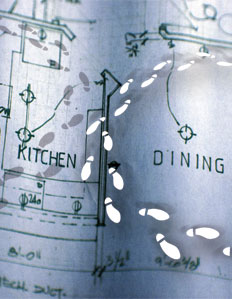Work smarter, not harder; successful operators have paid attention to this adage recently more than ever. With rising food and labor costs and a competitive consumer market with less discretionary income, operators have had to get creative to fully maximize profits during the recession. Part of this creativity includes designing an efficient store throughput.
Throughput is a sales-building concept that measures how many customers can be served per hour. According to WD Partners, a global design and program management firm for multiunit food and retail brands, quick serves have a 30 percent higher throughput capacity than fast-casual restaurants—totaling 90 extra transactions over a 10-hour time span. That potential is lost, however, if quick serves aren’t constantly looking for new ways to maximize throughput.
Throughput requires operators to evaluate every aspect of the operation from the time a customer arrives in the parking lot to when they walk out the door. The balance operators must strike to fully realize their throughput potential is one that serves the most customers per hour while also creating a customer experience that encourages them to return.
Various factors will help hit that balance. Throughput looks at the big picture of restaurant operations and includes things such as menu complexity, restaurant design, employee training, queuing, way finding, and food delivery times.
“You’ve got to start making sure that the experience for the customer is not just a good experience—it’s got to be an extraordinary experience,” says Sam Ballas, CEO of Winston-Salem, North Carolina–based East Coast Wings & Grill. “The consumer today is sophisticated and when they walk into your restaurant, they expect at a minimum a great experience. You get less opportunity to retain customers today, so you must refocus on things like greeting customers and the time it takes to bring a meal to the table.”
Some operators mistake throughput with speed of service, but experts say it’s more than that—it’s making sure your restaurant is operating like a well-oiled machine.
“Throughput and speed of service are somewhat related, but throughput is enabling the restaurant to put as many customers through as possible in a way that provides a quality experience for the customer and doesn’t make them feel rushed,” says Mike Watson, executive director of operations engineering for WD Partners. “Some people try to be fast, but that causes inaccuracies and short, quick conversations between employees and customers. Speed alone doesn’t take into account the experience side of it.”
Kenneth E. Avery, vice president of company operations for Charlotte, North Carolina––based Bojangles’ Chicken ‘n Biscuit, says throughput is especially important when combining an already competitive industry like foodservice with a down economy.
“Consumers are even more discerning about where they spend their money,” Avery says. “The restaurants that typically fare the best are continually looking for ways to maximize that experience for the customer, whether it’s food quality, consistency of the service they receive, speed of service, or accuracy of orders. All of those are important to address in a down economy.”
One of the primary ways operators can better maximize throughput is to step back, observe their everyday operations, and recognize bottlenecks in the flow of service.
“It’s a matter of putting yourself in a position to see where things aren’t moving,” Watson says. “You’re going to see employees that are idle, and you’re going to see employees that are really busy. I’ve seen managers literally standing there working up a sweat while six employees are standing around doing nothing. If the manager is too busy serving customers, they can’t manage the six employees around them to be more effective at doing their jobs.”
Watson says that while it’s the nature of foodservice to want to serve the customers as quickly and effectively as possible, a manager jumping in to help usually doesn’t optimize day-to-day business.
Avery says another common bottleneck happens when there’s confusion among employees about division of labor that’s created when duties aren’t assigned to specific crew members. Further confusion occurs when employees are scrambling to locate essential items to complete orders, wasting precious time that could be better spent moving the line.
“We’re focusing on organization and talking to our employees about their separation of job responsibilities so that we can maximize their efficiency and be able to react to the customer quicker,” Avery says. “We’re also doing things like organizing our condiments so that they’re in reach of the employees that need to get them to the customer.”
Throughput begins to break down when employees struggle to overcome poor restaurant organization. “I can remember working for a couple of different brands where you’d send somebody to the storage room and things weren’t labeled or organized, and they’d be back there for five minutes trying to find something when it should only take them 30 seconds,” Watson says.
Another important factor to give special consideration to is the design of the store.
“A huge mistake is relying only on the crew to move guests along quickly,” says Lori Mukoyama, principal at RTKL Associates Inc., a global architecture and design firm. “The successful quick serve will rely on a good store layout, strong design, and clear graphics to move transactions.”
Mukoyama says quick serves must be visually literate and spatially understandable. For example, bold signage and lowered soffits tell customers where order zones are, while poor counter design or clumsy point-of-sale stations can kill throughput. “The order sequence needs to be intuitive,” Mukoyama says. “The menus need to be legible and understandable.”
One growing trend in quick-service design is “duo points,” where one employee receives the order and another employee services it, Mukoyama says. “This concept minimizes wait times and fosters a sense of movement. Customers don’t feel as if their time is being wasted. It can be a great way of increasing throughput,” she says.
The bottom line is that fully utilizing employees and store layout maximizes throughput. “What it all comes down to is the people and how they’re managed,” Watson says.












